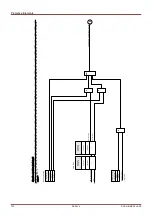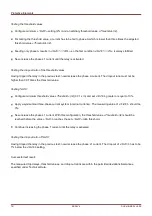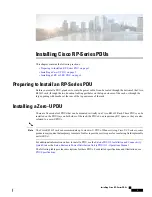
Protective Elements
K
= thermal load capability of the object while running with 100% unbalanced load current.
This is an intrinsic property of the object that is to be protected, and
therefore it must be specified as a setting value (Setting Group parameter »
K«).
I
n
I
b
= nominal current, in case of
»
CurrentBase
« = “Device Rating”,
= nominal current of the protected object, in case of
»
CurrentBase
« = “Protected Object Rating”.
I
2
= unbalanced load current
I2 (calculated from measured current values),
I
2
›
I
2/FLA
= Setting value
»
I2>«, in case of »
CurrentBase
« = “Device Rating”,
= Setting value
»
I2/FLA«, in case of »
CurrentBase
« = “Protected Object Rating”.
•
In case of a still present residual heat,
θ > 0, the tripping delay
t
trip
is reduced accordingly, so that an earlier
tripping occurs.
•
As long as the unbalanced load current
I2 is greater than the threshold
»
I2>« it is assumed that the object
is
heating up. During this phase, the heat (thermal) energy is calculated by an integration of the current
value
I2:
θ
(
t
)=
θ
0,
cool
+
ƒ
⋅
∫
∣
⃗
I
2
∣
2
dt
θ(t)
= actual value of the thermal energy,
θ
0,cool
= initial value at the beginning of the heating phase,
i. e. the thermal energy at the end of the last cooling-down phase
(or = 0, if the last cooling-down phase has ended, see below,
or if there has not been any cooling-down phase yet),
ƒ
= scaling factor.
•
As long as the unbalanced load current
I2 is less than the threshold
(»
I2>«
or
»I
2/FLA«) it is assumed that
the object is
cooling down. During this phase, the heat (thermal) energy is calculated based on a cooling-
down constant. This constant is another intrinsic property of the object that is to be protected, and therefore
it must be specified as a setting value (Setting Group parameter »
τ-cool«
)
:
θ
(
t
)=
θ
0,
heat
⋅
e
−
t
τ
cool
θ(t)
= actual value of the thermal energy,
θ
0,heat
= initial value at the beginning of the cooling-down phase,
i. e. the thermal energy at the end of the last heating-up phase
τ
cool
= object property, setting value »
τ-cool«.
•
The cooling-down phase always continues as long as I2 is below the threshold, i. e.
θ(t) is calculated
continuously. (Only after
θ(t) has dropped below 0.01
⋅
θ
max
the calculation ends and
θ gets reset to 0, i. e.
a subsequent heating-up phase will start with initial value
θ
0,cool
= 0.)
The heat (thermal) energy is an auxiliary value that is calculated and
maintained internally, i. e. it can neither be displayed at the HMI nor be
retrieved via any communication protocol.
744
MCDLV4
DOK-HB-MCDLV4-2E
Содержание HighPROtec MCDLV4
Страница 1: ...Manual Line Differential Protection MCDLV4 Software Version 3 4 a DOK HB MCDLV4 2E Revision A English...
Страница 3: ...Order Code Order Code 3 MCDLV4 DOK HB MCDLV4 2E...
Страница 47: ...Installation and Connection 47 MCDLV4 DOK HB MCDLV4 2E...
Страница 164: ...Input Output and LED Settings 164 MCDLV4 DOK HB MCDLV4 2E...
Страница 433: ...Parameters 433 MCDLV4 DOK HB MCDLV4 2E...
Страница 457: ...Device Parameters 457 MCDLV4 DOK HB MCDLV4 2E...
Страница 473: ...Blockings 473 MCDLV4 DOK HB MCDLV4 2E...
Страница 822: ...Protective Elements Name Description Profibus Scada Cmd 16 Scada Command 822 MCDLV4 DOK HB MCDLV4 2E...
Страница 988: ...Protective Elements 988 MCDLV4 DOK HB MCDLV4 2E P P Q P Q P Q Q Q P S S...
Страница 989: ...Protective Elements 989 MCDLV4 DOK HB MCDLV4 2E Pr Q P Q P Qr...
Страница 1023: ...Protective Elements 1023 MCDLV4 DOK HB MCDLV4 2E...
Страница 1070: ...Supervision 1070 MCDLV4 DOK HB MCDLV4 2E...














































